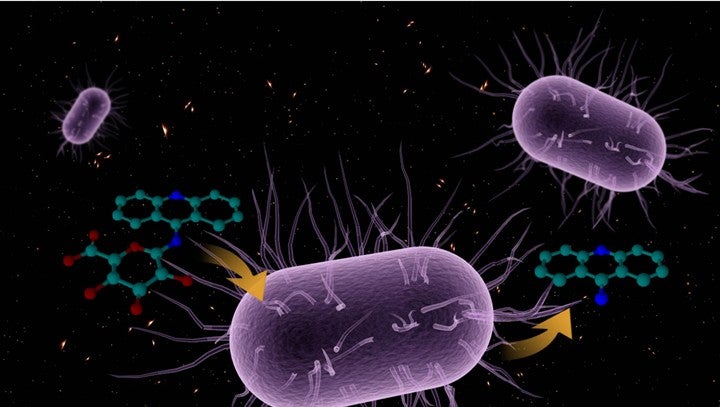Gut bacteria influences drug-induced liver injury
September 05, 20175 Sep 2017. NUS pharmaceutical scientists found that modulation of gut bacteria could enhance drug therapeutic value.
Pharmaceutical drugs are broken down by enzymes in the liver into their metabolites, which are subsequently excreted in the faeces and urine. Drugs can also undergo chemical reactions mediated by bacteria within the gut, an important process that is commonly neglected. In a new study, a team of pharmaceutical scientists from NUS found that gut bacteria may selectively modify the breaking down of a drug. This causes certain patients to suffer from drug-induced liver injury (DILI), where there are unexpected side effects from consuming a drug, causing liver damage. The discovery and understanding of this process could potentially lead to the development of novel strategies to improve drug treatment outcomes and reduce drug-associated side effects. The study, led by Prof Eric CHAN from the Department of Pharmacy, NUS was carried out using tacrine, an anti-Alzheimer’s disease drug which may cause unintended liver damage. The research was carried out in collaboration with scientists from GlaxoSmithKline, Department of Microbiology (NUS), Department of Surgery (NUS) and Genome Institute of Singapore (A*STAR).
“To date, the influence of microbes on the fate of drugs is only established for a small fraction of marketed medicines. The contribution of gut microbiota towards variation in the response of individuals to a given drug remains poorly understood. This difference in the response to drug therapy is clinically important and poses a major challenge to both drug development and patient management,” said Prof Chan.
The research team found that rats suffering from DILI (DILI rats) experienced a process termed “enhanced enterohepatic recycling”, where the excreted metabolite of the drug in bile is reconverted back to the parent drug by gut bacteria and reabsorbed into the body from within the gut. The DILI rats were found to have a greater amount of a specific bacteria that can enable this drug reconversion process. When this bacteria is made inactive, the research team found that there is less injury to the liver.
Dr YIP Lian Yee, who is the first author of the study, elaborated, “Our study establishes the gut microbial influences which cause unintended liver damage when using the drug tacrine, providing crucial insights for the development of personalised medicine initiatives.”
“Our study confirms for the first time that the liver-gut microbial community has an influence on unintended liver damage caused by tacrine in rodent models. While this study is focused on tacrine, our findings hold pertinent implications for other therapeutic drugs with side effects, particularly those that undergo extensive enterohepatic recycling, demonstrate large variations between individuals and exhibit narrow therapeutic indices,” said Prof Chan.

Illustration shows that the drug metabolite (tacrine N-glucuronide) is metabolised by a bacterium to regenerate parent tacrine in the intestine.
Reference
Yip LY; Aw CC; Lee SH; Hong YS; Ku HC; Xu WH; Chan JMX; Cheong EJY; Chng KR; Ng AHQ; Nagarajan N; Mahendran R; Lee YK; Browne ER; Chan ECY*, “The liver-gut microbiota axis modulates hepatotoxicity of tacrine in the rat” HEPATOLOGY DOI: 10.1002/hep.29327 Published: 2017.


